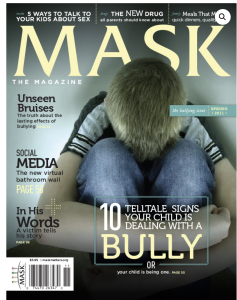
Alcohol and Teens
January 22, 2024
Parenting During the College Years
January 26, 2024Addressing bullying and supporting a child who is being bullied requires a thoughtful and proactive approach. Here are some steps you can take to help your child:
- Listen and validate:
- Begin by creating a safe and open space for your child to share their feelings. Listen attentively without judgment and validate their emotions. Let them know that their feelings are important and that you believe them.
- Stay calm:
- While it’s natural to feel anger and frustration, try to remain calm when discussing the situation with your child. This helps them feel more comfortable sharing their experiences and seeking support.
- Encourage open communication:
- Maintain an ongoing dialogue with your child about their experiences. Encourage them to talk about what’s happening, who is involved, and how it makes them feel. Regular communication helps you stay informed and supportive.
- Teach assertiveness:
- Help your child develop assertiveness skills to respond to bullying. Encourage them to assertively but calmly express their feelings and let the bully know that their behavior is unacceptable. Role-playing scenarios can be a helpful way to practice these skills.
- Reinforce self-esteem:
- Bullying can erode a child’s self-esteem. Reinforce their strengths and positive qualities. Encourage them to participate in activities they enjoy and excel at, fostering a sense of accomplishment.
- Involve the school:
- Reach out to your child’s teacher, school counselor, or principal to discuss the situation. Share specific details about the bullying incidents and request their assistance in addressing the issue. Schools often have anti-bullying policies and can intervene to ensure a safe environment.
- Collaborate with other parents:
- If you know the parents of the child involved in bullying, consider discussing the situation with them. Approach the conversation calmly and focus on finding a solution rather than placing blame. Sometimes, parents are unaware of their child’s behavior.
- Document incidents:
- Keep a record of each bullying incident, including dates, times, locations, and descriptions. This documentation can be valuable when communicating with school authorities or if further action is needed.
- Teach coping strategies:
- Help your child develop coping strategies to manage the emotional impact of bullying. This may include deep breathing exercises, mindfulness techniques, or seeking support from trusted friends.
- Seek professional help if needed:
- If your child continues to struggle with the effects of bullying, consider involving a mental health professional, such as a counselor or therapist, to provide additional support and coping mechanisms.
Remember, addressing bullying is a collaborative effort involving parents, educators, and sometimes even other students. It’s crucial to create an environment where your child feels heard, supported, and empowered to stand up against bullying.
Grab the Bully Issue of MASK The Magazine and learn how to help your child.
MASK The Magazine is the parenting manual offering solutions to the modern-day challenges families face. Each quarterly issue of the award-winning MASK The Magazine tackles a specific topic in-depth and examines how it can affect kids from Pre-kindergarten to College.
MASK the Magazine content is evergreen as it is written based on the “core” topics and strategies. Ships only in the United States.
To learn more about MASK The Magazine



